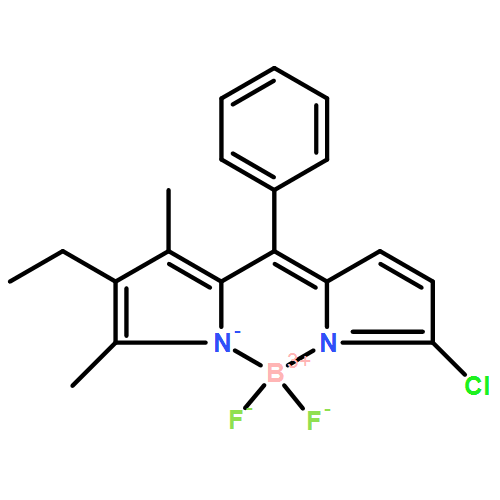Co-reporter: Chunchang Zhao, Yulin Zhang, Peng Feng and Jian Cao
pp: 831-838
Publication Date(Web):17 Nov 2011
DOI: 10.1039/C1DT10797F
A borondipyrromethene-based Zn2+ fluorescent probe BODPAQ was designed and synthesized. The chelators in BODPAQ, 2,2′-dipicolylamine (DPA) and 8-aminoquinoline (AQ), coordinate to Zn2+ in a synergic manner. As a result, BODPAQ displays high Zn2+ selectivity with a dramatic enhanced emission accompanied by a notable hypsochromic shift due to the binary inhibition effect of PET and ICT mechanisms, enabling the detection of Zn2+ by both ratiometric and normal turn-on fluorescence methods in acetonitrile. Interestingly, the sensitivity of BODPAQ towards Zn2+ changes upon varying the compositions of buffer solutions. In 3-morpholinopropanesulfonic acid (MOPS) buffer aqueous solution (50% CH3CN), BODPAQ displays the highest sensitivity for Zn2+, while in citrate–phosphate buffer, BODPAQ shows no response to Zn2+.
Co-reporter: Chunchang Zhao, Yulin Zhang, Peng Feng and Jian Cao
pp: NaN838-838
Publication Date(Web):2011/11/17
DOI: 10.1039/C1DT10797F
A borondipyrromethene-based Zn2+ fluorescent probe BODPAQ was designed and synthesized. The chelators in BODPAQ, 2,2′-dipicolylamine (DPA) and 8-aminoquinoline (AQ), coordinate to Zn2+ in a synergic manner. As a result, BODPAQ displays high Zn2+ selectivity with a dramatic enhanced emission accompanied by a notable hypsochromic shift due to the binary inhibition effect of PET and ICT mechanisms, enabling the detection of Zn2+ by both ratiometric and normal turn-on fluorescence methods in acetonitrile. Interestingly, the sensitivity of BODPAQ towards Zn2+ changes upon varying the compositions of buffer solutions. In 3-morpholinopropanesulfonic acid (MOPS) buffer aqueous solution (50% CH3CN), BODPAQ displays the highest sensitivity for Zn2+, while in citrate–phosphate buffer, BODPAQ shows no response to Zn2+.
